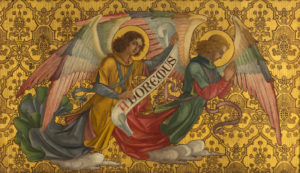In this segment, Bob Jones, Jr. shares the story behind what almost happened to this beautiful Tiffany mosaic.
Tag Archives: 19th century
In this segment Director Erin Jones shares some of the cultural milieu of the Victorian woman.
To view the next video in the series, click here.
In this segment writer Caroline Norton and philanthropist Angela Burdett-Coutts share reforms they inspired on behalf of Victorian women.
To view the next video in the series, click here.
Florence Nightingale’s understanding of Joseph Lister’s germ theory, along with her tireless work at Scutari during the Crimean War, would bring the nursing profession into the modern era.
To view the next video in the series, click here.
Darwin’s evolutionary theories were not only controversial in the Victorian era—they still are.
To view the next video in the series, click here.
Dawn Evers Corley says, “Owning a piece of antique silver is like owning a moment in time.” Watch the video to learn about one such “moment.”
To view the next video in the series, click here.
In our next few segments we’ll explore how Dickens’ imaginative creations helped alter the Victorian landscape, beginning with Oliver Twist and Britain’s poor laws.
To view the next video in the series, click here.
In this segment Erin Jones highlights some of Charles Dickens’ most inspiring characters.
To view the next video in the series, click here.
In this segment M&G Director Erin Jones continues exploring the theme of redemption through three Victorian portraits.
To view the next video in the series, click here.
